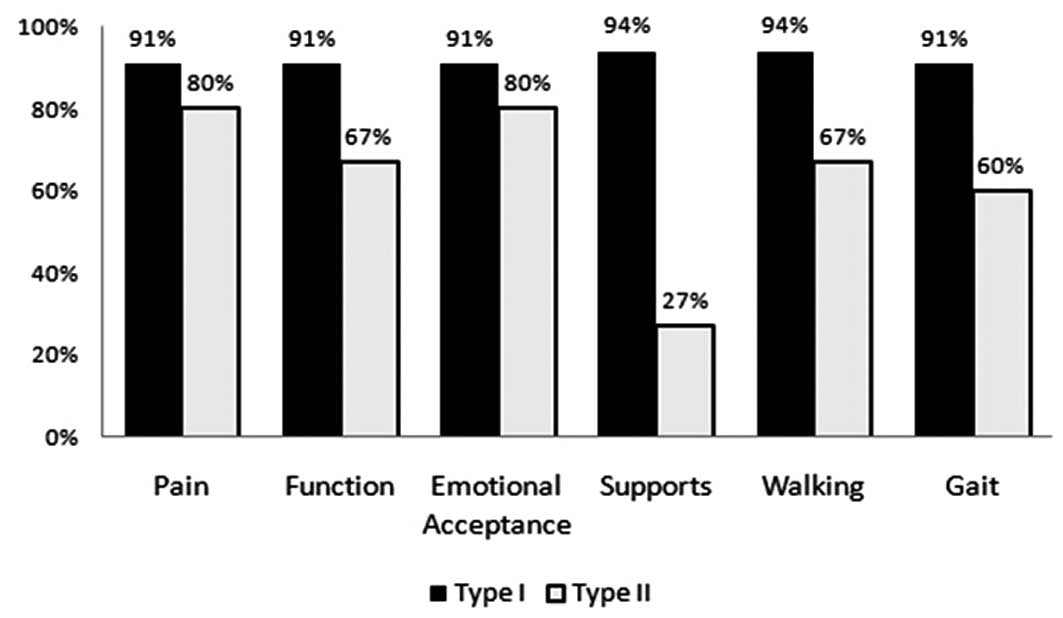Reconstruction of lateral knee joint stability following resection of proximal fibula tumors
- Authors:
- Published online on: November 26, 2013 https://doi.org/10.3892/etm.2013.1429
- Pages: 405-410
Metrics:
Total
Views: 0 (Spandidos Publications: | PMC Statistics:
)
Total PDF Downloads: 0 (Spandidos Publications: | PMC Statistics:
)
Abstract
Managing tumors of the proximal fibula may require en bloc resection of the fibular head with the attachment site of the lateral collateral ligament (LCL) and biceps femoris tendon. The aim of the present study was to evaluate knee stability and the Musculoskeletal Tumor Society (MSTS) functional score of patients with proximal fibula tumors. Twenty‑nine patients with proximal fibula tumors were retrospectively reviewed (18 patients in the reconstruction group and 11 patients in the non‑reconstruction group). A comparative analysis was conducted of knee stability (measuring the degree of lateral joint space opening using varus stress radiographs with a 30˚ knee flexion) and MSTS functional score between the two groups. The mean follow‑up period was 42.8±20.9 months (range 24‑117) and 40.8±26.0 months (range 24‑117) for the reconstruction and the non‑reconstruction groups, respectively. Fifteen patients (83.3%) in the reconstruction group had a stable knee, one (5.6%) had grade 1 instability and two (11.1%) had grade 2 instability. Four patients (36.4%) in the non‑reconstruction group had a stable knee, three (27.3%) had grade 1 instability, one (9.1%) had grade 2 instability and three (27.3%) had grade 3 instability. Patients who underwent reconstructive surgery exhibited a higher rate of knee stability compared with those in the non‑reconstruction group (P<0.05). The MSTS function scores were 93% (range, 93‑100%) for the reconstruction group and 87% (range, 60‑100%) for the non‑reconstruction group (P<0.05). Reconstruction of the LCL and biceps femoris tendon to the lateral tibial metaphysis with a suture anchor was a safe, reliable and simple technique following resection of proximal fibula tumors.
















